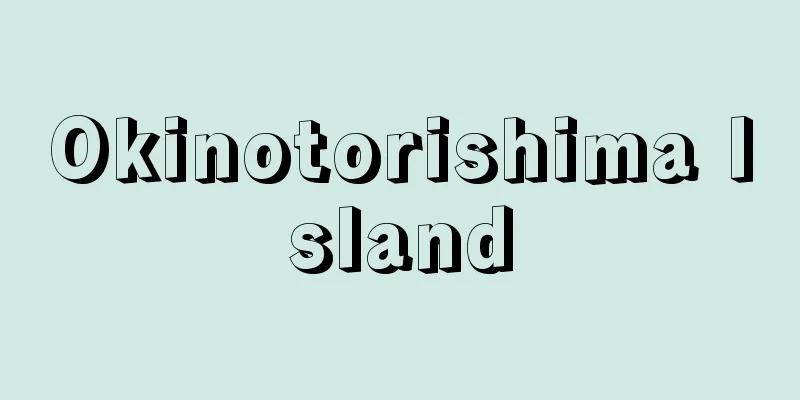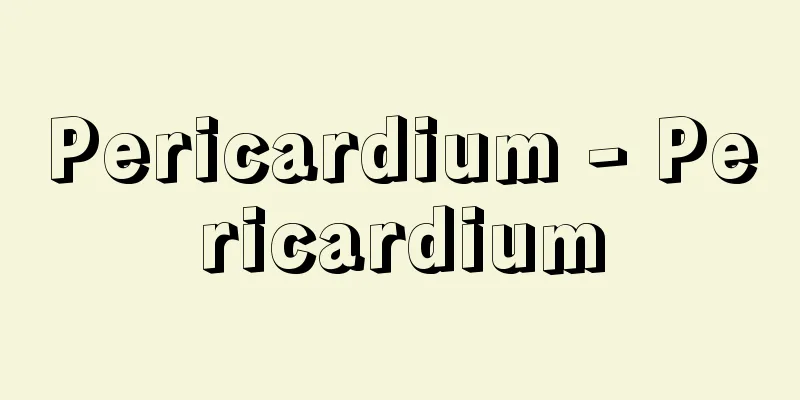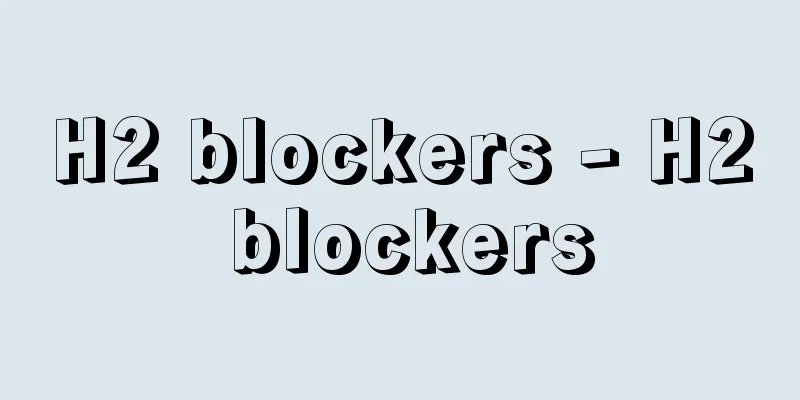Okinotorishima Island

|
The southernmost island in Japan (20°25'N, 136°5'E) belonging to Ogasawara Village, Tokyo. It is included in the Ogasawara Islands. It is about 685 km southwest of Minami-Iou Island, and is an elliptical atoll measuring about 4.5 km east to west and 1.8 km north to south. Almost the entire island is below sea level, with two reefs on the north and east protruding about 70 cm above sea level at high tide. It was discovered by the Spanish in the 17th century, but since most of the island is below sea level, no issues arose regarding its ownership. In 1922 (Taisho 11), a Japanese warship surveyed the island, and it became Japanese territory in 1931 (Showa 6), and was incorporated into the Ogasawara Branch Office. After World War II, it came under American administration, but was returned in 1968 (Showa 43). Although it is important in terms of setting Japan's territorial waters and exclusive economic zone (EEZ), there were concerns that the reefs protruding above sea level would disappear due to wave erosion, so it was designated a coastal conservation area in 1987, and conservation work using wave-dissipating blocks and concrete was carried out between 1987 and 1993. Direct management, fully funded by the national government, began in 1999, and operation of the Okinotorishima Lighthouse began in 2007. [Kikuchi Masao] EEZ IssuesIn addition to its territorial waters, Okinotorishima is important as the base of the exclusive economic zone (EEZ) and continental shelf, where fishing and the development and use of natural resources are permitted. The Japanese government claims that the EEZ covers approximately 400,000 square kilometers around the island, and the continental shelf covers 177,000 square kilometers of the Shikoku Basin area north of the island. The continental shelf was recognized by the United Nations Commission on the Limits of the Continental Shelf in 2012. However, China and South Korea take the position that Okinotorishima is not an island but a rock, and that no EEZ exists. During the Ma Ying-jeou administration, Taiwan claimed that Okinotorishima was a rock, and requested in the Japan-Taiwan Maritime Cooperation Dialogue that Taiwanese fishing boats be allowed to operate off the coast of Okinotorishima. [Takeshi Yano May 19, 2017] [References] | | |Source: Shogakukan Encyclopedia Nipponica About Encyclopedia Nipponica Information | Legend |
|
東京都小笠原村(おがさわらむら)に属する日本最南端(北緯20度25分、東経136度5分)の島。小笠原諸島に含まれる。南硫黄(いおう)島の南西約685キロメートルにあり、東西約4.5キロメートル、南北約1.8キロメートルの楕円(だえん)形の環礁。ほとんどすべて海面下で、北と東にある二つの岩礁が満潮時で約70センチメートル海面上に出ている。17世紀にスペイン人が発見したが、島の大部分が海面下のため所属問題はおこらなかった。1922年(大正11)日本の軍艦が島を測量し、1931年(昭和6)から日本領とし、小笠原支庁に編入された。第二次世界大戦後アメリカの施政権下に入ったが、1968年(昭和43)返還された。日本の領海や排他的経済水域(EEZ)の設定上、重要であるが、海面上に出ている岩礁の波食による消滅が懸念され、1987年海岸保全区域に指定して、1987年から1993年(平成5)にかけて消波ブロックとコンクリート等による保全工事が行われた。1999年からは全額国費による直轄管理が始まり、2007年(平成19)から沖ノ鳥島灯台の運用が開始されている。 [菊池万雄] EEZ問題沖ノ鳥島は領海のほか、漁業や天然資源の開発・利用を認められる排他的経済水域(EEZ)や大陸棚の基点として重要であり、日本政府は同島周辺約40万平方キロメートルをEEZ、同島北方の四国海盆海域17万7000平方キロメートルを大陸棚であると主張。このうち大陸棚については2012年(平成24)に国連大陸棚限界委員会に認定された。しかし中国や韓国は島ではなく岩でありEEZは存在しないとの立場をとっている。台湾は馬英九(ばえいきゅう)政権時代に沖ノ鳥島は岩であると主張、日台海洋協力対話で沖ノ鳥島沖での台湾漁船の操業を認めるよう求めた。 [矢野 武 2017年5月19日] [参照項目] | | |出典 小学館 日本大百科全書(ニッポニカ)日本大百科全書(ニッポニカ)について 情報 | 凡例 |
Recommend
Giant Snowdrop
...Among spring-flowering bulbous plants, this is...
Poet Tamakusetsu - Shijingyokusetsu
A book on poetry compiled by Wei Qingzhi at the e...
Skeleton
An organ that supports and shapes the body. In th...
Emile
This masterpiece by Jean-Jacques Rousseau, started...
Satin
It is also written as "shuzi". Unlike t...
Kashimo [village] - Kashimo
A village in Ena County, on the eastern edge of Gi...
Kingston valve - Kingston valve (English spelling)
A valve installed at the main seawater intake of a...
Obansho - Obansho
According to documents from the Shogunate's C...
Pontos - Pontos (English spelling)
The northeastern region of ancient Asia Minor, fa...
Anti
A prefix derived from the Greek meaning "opp...
Vasilii Kirillovich Trediakovskii
1703‐68 Russian poet. He studied at the Sorbonne, ...
Canal du Nivernais - Nivernais Canal (English spelling)
Located in central France, this canal connects the...
Mount Hermon
A mountain at the southern end of the Anti-Lebanon...
Masachika Asukai
Year of death: Entoku 2.12.22 (1491.1.31) Year of ...
Sedum aizoon (English spelling) Sedumaizoon
… [Hiroshi Yuasa]. … *Some of the terminology tha...
![Zao [town] - Zao](/upload/images/67cba72d1da65.webp)








